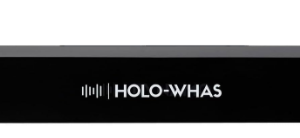Welding involves the use of extremely high temperatures to fuse two metal workpieces together. Most metals melt when exposed to such high heat. However, tungsten has an impressively high melting point, coming in at over 3,400°C. This makes it an excellent substitute for the consumable metal electrodes typically used in metal inert gas welding, and has given rise to the practice of tungsten inert gas or TIG welding.
In TIG welding, however, you need to use a separate rod that supplies the filler metal to the weld pool. Before you buy TIG welding rods, you need to know how to choose the right options for your specific TIG welding project. Using the wrong kind of TIG welding rods can lead to poor quality welds, and may even compromise the strength of the joint.
So, if you want to learn how to pick the right welding supplies, check out this comprehensive guide on choosing the right TIG welding rods for your project.
4 Tips to Help You Choose the Right Type of TIG Welding Rod
Finding suitable TIG welding rods for your weld job is fairly easy if you know what you are looking for. However, if you are a beginner, you may be a bit clueless about where to get started. The summary is that the material and the size of the TIG welding rods matter the most. Once you learn how to check and identify TIG rods of the right material and size, you can get better at choosing suitable welding supplies for your needs.
Here are some essential tips to help you understand what to look for.
-
Consider the Base Metals to be Joined
The base metals you are going to be working with play a crucial role in TIG welding rod selection. Basically, the material used to make the TIG filler rod you choose should be compatible with the metal workpieces you intend to join. Given the wide variety of materials in which TIG welding rods are available, it should be fairly easy to find a suitable rod no matter what base metals you are working with.
Some common TIG welding rod materials include steel, stainless steel, aluminum, titanium and even cast iron. Generally, it is advisable to use a TIG rod made of the same material as the base metal workpieces. For example, if you are planning to join two or more pieces of aluminum, an aluminum TIG welding rod would be the ideal choice for your weld job.
-
Compare TIG Welding Rod Materials
Choosing the right TIG welding rod material is only the first step of the process. Next comes the question selecting the right variant of the rod. Even within each category of rods of a certain material, the composition of the metals and alloys may vary, leading to several variants. Take a look at some common variants of different types of TIG rods below.
Variants of Steel TIG rods:
- ER70S-6 used to weld mild steel
- ER80SD-2 that is suitable for single and multi-pass welding
- ER70S-2 for high X-ray quality welds
Variants of Stainless Steel TIG rods:
- ER308 and ER308L for commonly welding stainless steel
- ER309 and ER309L with higher heat and corrosion resistance, suitable for welding dissimilar base metals
- ER316 and ER316L used in welding chemical and marine equipment
Variants of Aluminum TIG rods:
- ER4043 used in joining weldable wrought or cast aluminum alloys
- ER5356 used to weld 5xxx series aluminum alloys
- ER4047 with higher silicon content, suitable for use at lower temperatures
As you can see, there are different kinds of TIG rods even within the same material category. So, the next important step is to identify which kind of rod best aligns with the application you want to use it for.
-
Check the Size of the TIG Welding Rods
Once you have determined the overall material as well as the specific variant of the TIG welding rods required, you need to focus on the size of the rod. This includes the length as well as the diameter of the welding consumables. The length requirement can typically be easily met. What you’ll want to pay particular attention to is the diameter.
TIG welding rods are available in different standard diameters. Common options include the following sizes:
- 1.6 millimeters
- 2.4 millimeters
- 3.2 millimeters
- 4.0 millimeters
- 4.8 millimeters
- 6.4 millimeters
You can choose the TIG rod that is suitable for the thickness of the metal workpieces you wish to weld. The size and length of the filler TIG welding rods will also depend on the type of joint, namely a butt or a fillet weld. If the two metal surfaces are to be joined on the same plane, it’s called a butt weld. On the other hand, if the workpieces are to be joined at a 90° angle, it’s a perpendicular fillet weld.
-
Pay Attention to the Quality
Lastly, it’s also important to pay attention to the quality of the TIG welding rods you purchase. To avoid any issues due to poor quality, always opt for a brand that you trust. In case you are unable to source the materials from a trusted brand, you may have to source the filler rods locally. Should such a situation arise, make sure you pay attention to the design and build of the rods, check for signs or rust or damage, and inspect the rods thoroughly before you purchase them.
Conclusion
The pointers outlined above can help you identify which TIG welding rods can contribute the most to your welding job. Take into account all the parameters discussed in this guide before you zero in on the TIG welding rods to use for a particular weld. With time, you will be able to identify the right welding rods for your TIG welding more quickly and naturally. But if you are a beginner, you can use a checklist to make sure you’ve factored in all the important parameters.





























